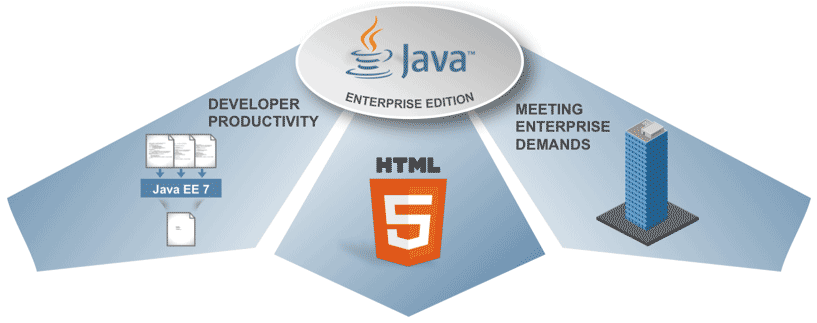| Java Interview Questions Sitemap | |
| J2EE Interview Questions | JDBC Interview Questions |
Java Platform, Enterprise Edition or Java EE is a widely used platform for server programming in the Java programming language.
The Java platform (Enterprise Edition) differs from the Java Standard Edition Platform (Java SE) in that it adds libraries which provide functionality to deploy fault-tolerant, distributed, multi-tier Java software, based largely on modular components running on an application server.
The platform was known as Java 2 Platform, Enterprise Edition or J2EE until the name was changed to Java EE in version 5.
Java Platform, Enterprise Edition 7 (Java EE 7) offers new features that enhance HTML5 support, increase developer productivity, and further improves how enterprise demands can be met. Java EE 7 developers will write less boilerplate code, have better support for the latest Web applications and frameworks, and gain access to enhanced scalability and richer, simpler functionality. Enterprises will benefit from new features that enable portable batch processing and improved scalability.
The Java platform (Enterprise Edition) differs from the Java Standard Edition Platform (Java SE) in that it adds libraries which provide functionality to deploy fault-tolerant, distributed, multi-tier Java software, based largely on modular components running on an application server.
The platform was known as Java 2 Platform, Enterprise Edition or J2EE until the name was changed to Java EE in version 5.
Java Platform, Enterprise Edition 7 (Java EE 7) offers new features that enhance HTML5 support, increase developer productivity, and further improves how enterprise demands can be met. Java EE 7 developers will write less boilerplate code, have better support for the latest Web applications and frameworks, and gain access to enhanced scalability and richer, simpler functionality. Enterprises will benefit from new features that enable portable batch processing and improved scalability.

Java EE is defined by its specification. As with other Java Community Process specifications, providers must meet certain conformance requirements in order to declare their products as Java EE compliant. Java EE includes several API specifications, such as JDBC, RMI, Java Mail, JMS, JAXR, JRMP, JAXM, and defines how to coordinate them. Java EE also features some specifications unique to Java EE for components. These include Enterprise JavaBeans, Connectors, servlets, portlets (following the Java Portlet specification), JavaServer Pages and several web service technologies. This allows developers to create enterprise applications that are portable and scalable, and that integrate with legacy technologies. A Java EE application server can handle transactions, security, scalability, concurrency and management of the components that are deployed to it, in order to enable developers to concentrate more on the business logic of the components rather than on infrastructure and integration tasks.